Effective January 1, 2022 SASMI will offer two new COVID related benefits. A Vaccination Benefit and an Interference with work Benefit
Vaccination Benefit
To encourage all participants to receive a vaccination to protect against COVID-19, members ($200.00) and their covered eligible dependents (spouse and/or children $100.00) may be eligible for a vaccination benefit.
Interference with Work Benefit
If a member became ill and could not work due to significant side effects from a first, second and/or booster vaccination for COVID-19, they may be eligible to receive a benefit. Up to 24 hours of wages at your home local union wage rate, per vaccination.
How to Apply for Both Benefits:
If eligible, members need to complete the application on the member portal via SASMI’s website (www.sasmi.org). A separate application will be required for each benefit. A separate application is required for each of the member’s dependents. Each application must include: A copy of their individual vaccination card (front and back), Manufacturer information,Vaccine lot number, A Vaccination Card ID (number on the back right corner of their card).
Finally, they will need to consent that SASMI can verify their status with the CDC and that SASMI can verify dependent eligibility with their local health fund (Vaccination Benefit ONLY). Receipt of the Vaccination Benefit does not limit a participant’s eligibility for other active benefits under the Plan and is not considered when calculating Severance or HCRA benefits. However, the Interference with Work Benefit will be included when calculating Severance or HCRA benefits as well as the 200% Rule.
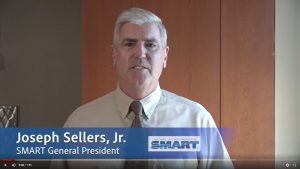
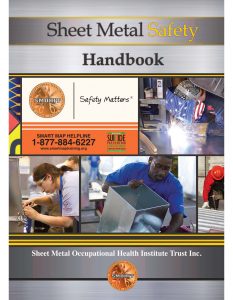
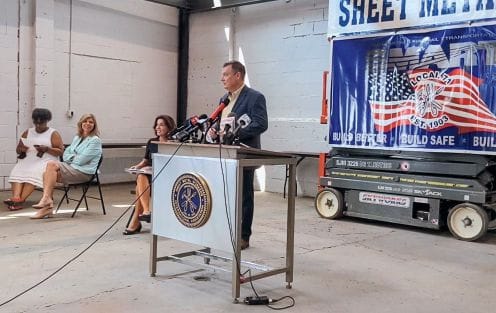
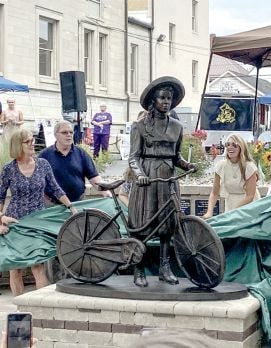

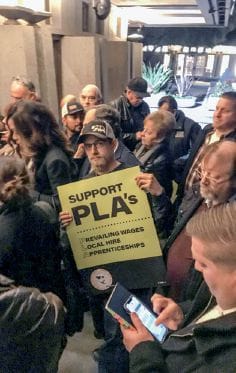 The site itself is on over 5,000 acres of land and will have over 13,000 new units of housing along with millions of square feet of commercial space. Over the last five years, Local 104 members have really stepped up their efforts and engaged in the political process in Concord. This includes helping elect local working family champions to city council, engaging in community cleanups and turning out at many community events. On January 20th, 2020, there was the biggest turn-out of Building Trades members in over a decade at a city council meeting anywhere in the Bay Area. With over 200 union construction workers, community allies and family members, members let Concord City Council know that a Project Labor Agreement was essential to meeting the needs of the Concord First Policy and ensuring that local workers and apprentices from joint-labor management programs would be hired on this project. This caused the original developer to walk away from the project, and with that, three new developers submitted proposals to the city for their vision of the project.
The site itself is on over 5,000 acres of land and will have over 13,000 new units of housing along with millions of square feet of commercial space. Over the last five years, Local 104 members have really stepped up their efforts and engaged in the political process in Concord. This includes helping elect local working family champions to city council, engaging in community cleanups and turning out at many community events. On January 20th, 2020, there was the biggest turn-out of Building Trades members in over a decade at a city council meeting anywhere in the Bay Area. With over 200 union construction workers, community allies and family members, members let Concord City Council know that a Project Labor Agreement was essential to meeting the needs of the Concord First Policy and ensuring that local workers and apprentices from joint-labor management programs would be hired on this project. This caused the original developer to walk away from the project, and with that, three new developers submitted proposals to the city for their vision of the project.
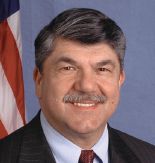 Richard Trumka, president of the AFL-CIO, which represents 12.5 million union members and 56 unions, passed away Aug. 5, 2021, at the age of 72.His death marks the passing of a legendary figure in the history of the labor movement. Brother Trumka devoted his life to working people, from his early days as president of the United Mine Workers of America to his leadership as the voice of America’s labor movement.
Richard Trumka, president of the AFL-CIO, which represents 12.5 million union members and 56 unions, passed away Aug. 5, 2021, at the age of 72.His death marks the passing of a legendary figure in the history of the labor movement. Brother Trumka devoted his life to working people, from his early days as president of the United Mine Workers of America to his leadership as the voice of America’s labor movement.